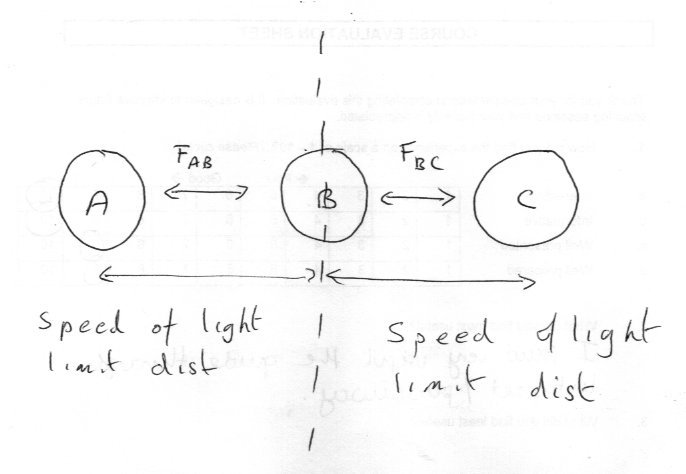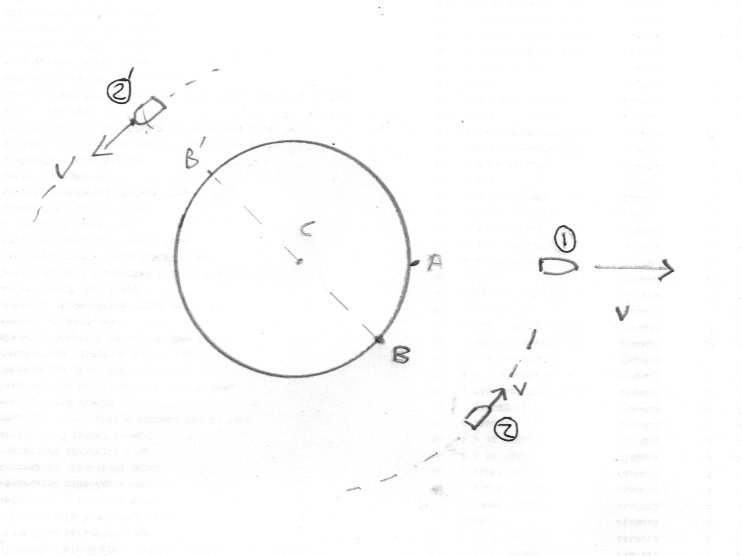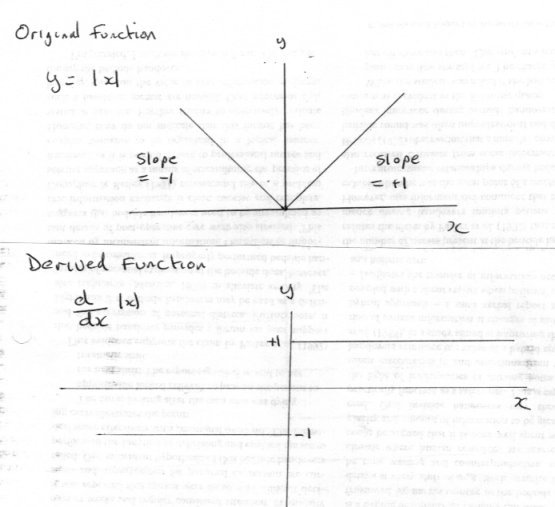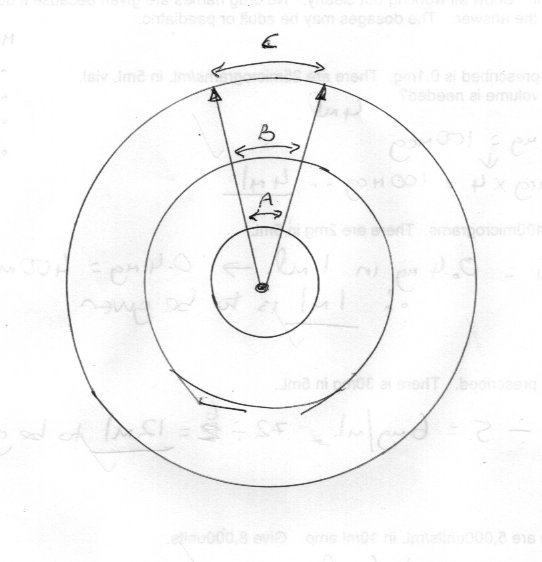-
Posts
18311 -
Joined
-
Last visited
-
Days Won
104
Content Type
Profiles
Forums
Events
Everything posted by studiot
-

Michelson Morley experiment is no confirmation of Special Relativity
studiot replied to vanholten's topic in Speculations
I am out tonight, so will not reply again today. As regards the Dutch, I have not the luxury of being bilingual like my sister-in-law who teaches Maths in Leiden and her husband. If it is too difficult, I could ask them to translate if you sent me a document by PM. -
Thank you for that comment, you are right of course I thought in haste. But I later amended my thoughts. Thank you for the video, twas interesting. However a small nit. You are considering the Earth receiver as a point and that is not satisfactory for a low orbit. Due to the Earth's rotation the equator has an tangential speed of some 1600 km/hr. Though much smaller than the speed of the satellite Strange mentioned it is still a significant proportion, enough to create a variable relative speed depending upon where on Earth the receiver is located. This effect is doubled between receivers located on opposite sides of the globe, so potentiall a diffence of 3600 km/hr. So there will be (a small) variation and Doppler effect.
-

Gravity is limited to a range extendable with the speed of light c
studiot replied to awaterpon's topic in Speculations
Coming back to the headline The truth of or otherwise of this could be demonstrated by observing the behaviour of objects subject to more than one gravitational influence. For example how would your proposal affect forces FAB and FBC in the following simplified situation? It would certainy work differently from conventional predictions , either GR or Newton. -

Continuous functions and non-continuous derivatives...
studiot replied to Sasho's topic in Analysis and Calculus
I fail to see any relevaence whatsoever to my example or to the topic in general. In the first place the OP is learning standard analysis. Keiseler in the section you refer to invokes non standard analysis and the hyper-reals. In the second place the examples of improper integrals such as the integral are improper because the slope becomes infinite (eg the slope of y = 1/x near the y axis) are different from my example, which is bounded in both f(x) and f'(x) for all finite x. The issue for my example is that For f(x) the limits from the left always = the limits from the right But for f'(x) the limits from the left = minus the linits from the right at the point x = 0 These are the standard analysi condition for continuity and non continuity. So once again Why is my example faulty? -

Michelson Morley experiment is no confirmation of Special Relativity
studiot replied to vanholten's topic in Speculations
Since you are worrying over simultaneity let us examine the passage in more detail. Perhaps we can make progress that way. Many authors state without derivation a result from elsewhere that is needed in the paper. Einstein did exactly this in his 1905 paper to which you refer where he introduces the criterion or condition for simultaneity. tB - tA = t'A - tB He does not derive this condition (and perhaps it is an unusual way to ste the condition) so let us do so now. First let us note that he starts the section on page 2 by establishing a "coordinate system in which the "equations of Newtonian Mechanics hold good". He does not specifically say he invokes the principle of reversibility of light (which is part of Newtonian Mechanics) but he uses it to state that the transit time for light from fixed point A to fixed point B in this coordinate system is the same as the transit time for light from B to A. I will call this time T, although we don't know it intiially. So we have. Light Transit time A to B = Transit time B to A = T Clock A start reading = tA Clock B arrival time = Clock B departure time = tB Clock A return/arrival time = t'A I won't go into all the guff about making sure the clocks run at the same rate when side by side, can I take that as read? When the clocks are side by side at A let the difference in reading be , Δ, maintained a constant over a sufficiently long period. Then tB = tA + Δ + T and t'A - tA = the time from A to B and back = 2T Substituting these into Einstein's expression, For the left hand side tB - tA = tA + Δ +T - tA = T + Δ and For the right hand side t'A - tB = (t'A - tA) - Δ - T = 2T - Δ - T = T - Δ The only way these can be equal is if Δ = 0, leading to the identity T = T. Thus ends the derivation or proof of the condition. Does this help? -
Your question has more depth than I first thought. Thank you for a good question +1 Here is a sketch showing two spaceships, one moving directly away from Earth the other orbiting, but both travelling at velocity v. Spaceship 1 is travelling directly away from Earth at constant speed v so its relative velocity is also constant at v. Spaceship 2 is orbiting at constant speed but its velocity is continually changing as its direction is continually changing. So it is accelerating. Technically special relativity does not apply directly to this situation although it can be extended to it.
-
Kind of depends what you mean by ' the relative time difference'. In all the formula the time dilation (given by the gamma factor) depends upon the relative velocity between the two spacehip and the Earth. If the spaceship is not getting further away the radial relative velocity is zero - so there is no time dilation to be had there. The relative velcoity due to the tangential velocity would be variable and much lower. this would impact upon your question part 2. The radial velocity represents the maximum possible relative velocity and thus the maximum possible time dilation. Does this help?
-

Continuous functions and non-continuous derivatives...
studiot replied to Sasho's topic in Analysis and Calculus
Thank you for the link to the pdf. 992 pages. It will take some time to read! However surely integrals, considered as antiderivatives or otherwise, are off topic in a thread devoted to the derived function? In particular how is this derived function not discontinuous? -

Split from: First ever photo of a black hole to be revealed this week:
studiot replied to Hassani's topic in Speculations
I have already posted the extract from the original 1783 paper where the existence of what we now call a black hole was posited in the thread this one was a spin off from. Clearly in the hundred and thirty three years between the papers much (mathematical) work if improvement and development was carried out. The person who read the original paper had only just been about the first proper measurements of gravity. https://www.scienceforums.net/topic/118711-an-announcement-for-beecee/?tab=comments#comment-1100487 -

Continuous functions and non-continuous derivatives...
studiot replied to Sasho's topic in Analysis and Calculus
I think the derived function of the modulus function has a discontinuity at x=0, where the slope changes abruptly from -1 to +1. This you will find in all the standard textbooks as it is the bog standard example, and also if you look it up on the net. What more is there to be said? -
As regards loops I am completely with swansont about this. You said So yes, you did mention closed loops, which undoubtedly possess the property of enclosing an area. Actually you didn't. you mentioned EM fields and waves (AKA photons) This quote also shows why Ghideon is correct to chase you over the introductions of quarks. A word of observation. You tend to respond with reams of quotes from august people, rather than with your thoughts. All this constant 'appeal tov authority' 'does is obscure the matter in hand. You would be better employed taking swansont's advice and making sure your own statements are consistent.
-

Michelson Morley experiment is no confirmation of Special Relativity
studiot replied to vanholten's topic in Speculations
That's correct I did write that because Einstein derived the formula you state as a fundament from his two theoretical postulates. The first actually being nothing new, just a simple restatement of the already known Principle of Relativity. The second introduced something new. The invariability of c. However, like all such axiomatic constructs, the axioms or principles have to be consistent with each other. The first one allowed Newton's laws to be recast in accordance the Principle of Relativity. But Einstein wanted to include the laws of Electrodynamics as well (this was, after all, the tile of his paper). As they stood they were incompatible with the POR This is why the second postulate was introduced. He didn't need any more. So I would be interested in the mathematical passage that leads you to believe the equation has the status of a postulate or fundament at you call it. -
Now I know this is a thread about Voodoo not Physics. First you deny that photons are particles suggest but they are actually scalar fields. Then you suggest that magnetic fields are actually particulate, with not one but two types of particle.
-
I think it was here we had a thread which had lots of good examples in the measurement of liquid volumes. So burette measurement by reading difference. Pipette measurement of a set volume. Then there is four terminal measurement in electric circuitry. And measurement by difference on several parts of a tape measure. And the 'rise and fall' self checking method of levelling in surveying.
-
Firstly let me say that I realise I owe you an apology, when I said this I was confusing this thread with the current thread about Special Relativity and the MM experiment. However my points still remain and I hope you will not follow the trend established in that other thread of attempting to invert history. By this I mean this comment here Historically Science was founded in and generally restricted to classification and cataloging of observations. No rational epistemology was possible before this stage although there there were plenty of guesses, some of them far wilder and less justifiable than others. The science of Physics has progressed further away from this than most other sciences, some of which have not moved very far at all.
-
Yes exactly so. So if another experiment comes along with a different result what does that 'prove' The experiment is always 'right' but until we have carried out every possible experiment we have to admit the possibility that a different experiment will yield different results, perhaps extending our knowledge, perhaps providing the basis for yet more 'Principles' - but it does not prove them. And you still haven't replied to my first post.
-
You claim this is Physics - at a high level. Yet you talk repeatedly of proof. Surely you know that there is no such thing as 'proof' in Physics?
-

Michelson Morley experiment is no confirmation of Special Relativity
studiot replied to vanholten's topic in Speculations
@vanholten You haven't responded to my only post in this thread. I remain unsure as to your exact point or question here so can you please set it out more clearly (and preferably more briefly). Surely the point of correspondence between a Theoretical Physics proposition and a measurement is that they both yield the same result, vis the Lorenz Fitzgerald contraction. By itself that correspondence is insufficient to be called 'the balance of the evidence' butthere have been many other quite different corroborative experiments of the succeeding years. -

Gravity is limited to a range extendable with the speed of light c
studiot replied to awaterpon's topic in Speculations
Thanks. +1 So it was perhaps Caltech not NASA. -

Gravity is limited to a range extendable with the speed of light c
studiot replied to awaterpon's topic in Speculations
It was a while ago now, but I will try to find the original webpage for you. -
So you now have the satisfaction of having puzzled most of the question out for yourself.
-
Just to reinforce what pzkpfwsaid, the keyword is 'spreading' Look at the diagram with a source (IR or other radiation). The radiation starts at the centre and has no other source so moves outwards along the arrows shown. As you move away from the centre the radius increases. So the circumference increases. And the arcs of circumference, labelled A, B and C increase. But the same amount of radiation passes each arc A, B, and C in turn, between the expanding arrows. So the same amount of radiation is spread out over a larger length of arc. If we now scale this up to 3D so we have the surfaces of spheres can you see that the surface of each sphere is larger, the further away from the centre source you are? Now a bit more technical. The formula for the surface area of a sphere is [math]4\pi {r^2}[/math] So for each sphere the same amount of radiation is spread over an area that increases with the square of the distance. So the strength = total amount of radiation divided by the area or the amount of radiation per square metre decreases in proportion to the inverse of teh square of the distance. This is called the inverse square law. https://www.google.co.uk/search?source=hp&ei=wGGwXIDZM8zykwWw37qwBA&q=inverse+square+law&btnK=Google+Search&oq=inverse+square+law&gs_l=psy-ab.3..0l10.1294.4078..4516...0.0..1.390.4476.0j8j4j6......0....1..gws-wiz.....0..0i131.diRc6iZ4fXY
-
The linear acceleration of the point of contact of the rope and pulley is the same as you have already found. Can you relate this to the rotating properties of the pulley (radius, moment of inertia etc) ? I don't like using x as the basic distance variable since you may need to resolve the motions into x and y coordinates or actually work along the line of motion. Further xo has no proper meaning in terms of distance travelled and will give misleading answers in cases where resolution is needed (eg because the motion is not along the x axis). Not only is it wildly unconventional, I think it's just the authors puffing themselsves up.
-

Gravity is limited to a range extendable with the speed of light c
studiot replied to awaterpon's topic in Speculations
-
I see you visited the site some hours after I posted but did not reply. Hopefully you are thinking about it. I hope you picked up the significance of this statement. It means that bothe masses and all parts of the rope move the same distance in the same time resulting in the same acceleration. So we can simply apply Newton's second law (F = ma) to each mass to obtain the net acceleration force. For the book mass the rope is pulling in the horizontal direction and its tension is the only force acting on the book so [math]T = 2\left( {\frac{{30}}{8}} \right) = 7.5N[/math] For the hanging weight there are two forces acting. The tension in the rope and gravity and these act in opposite directions. Can you form the equation to determine the tension using this information ? This is where swansont's suggestion comes in handy.






